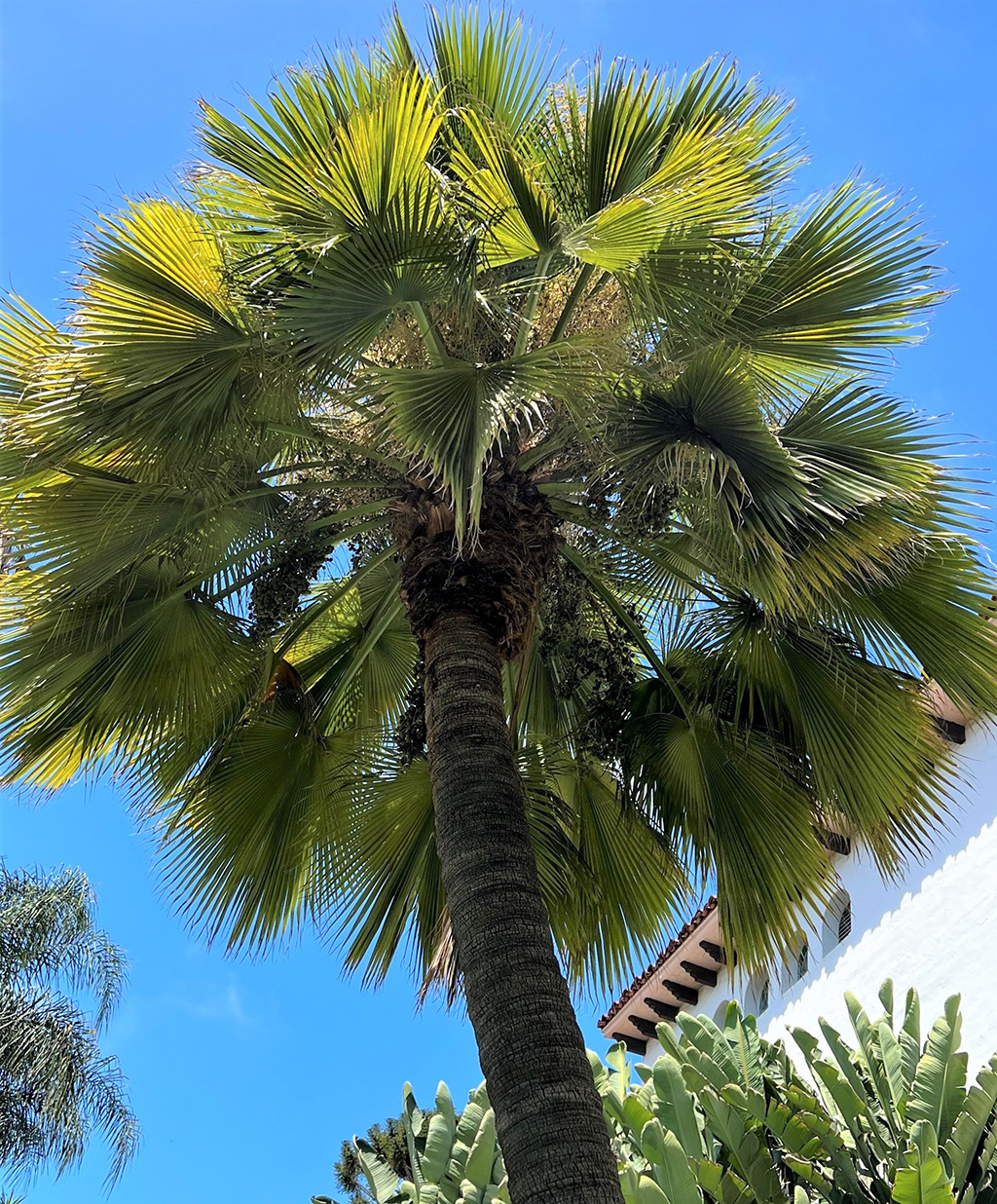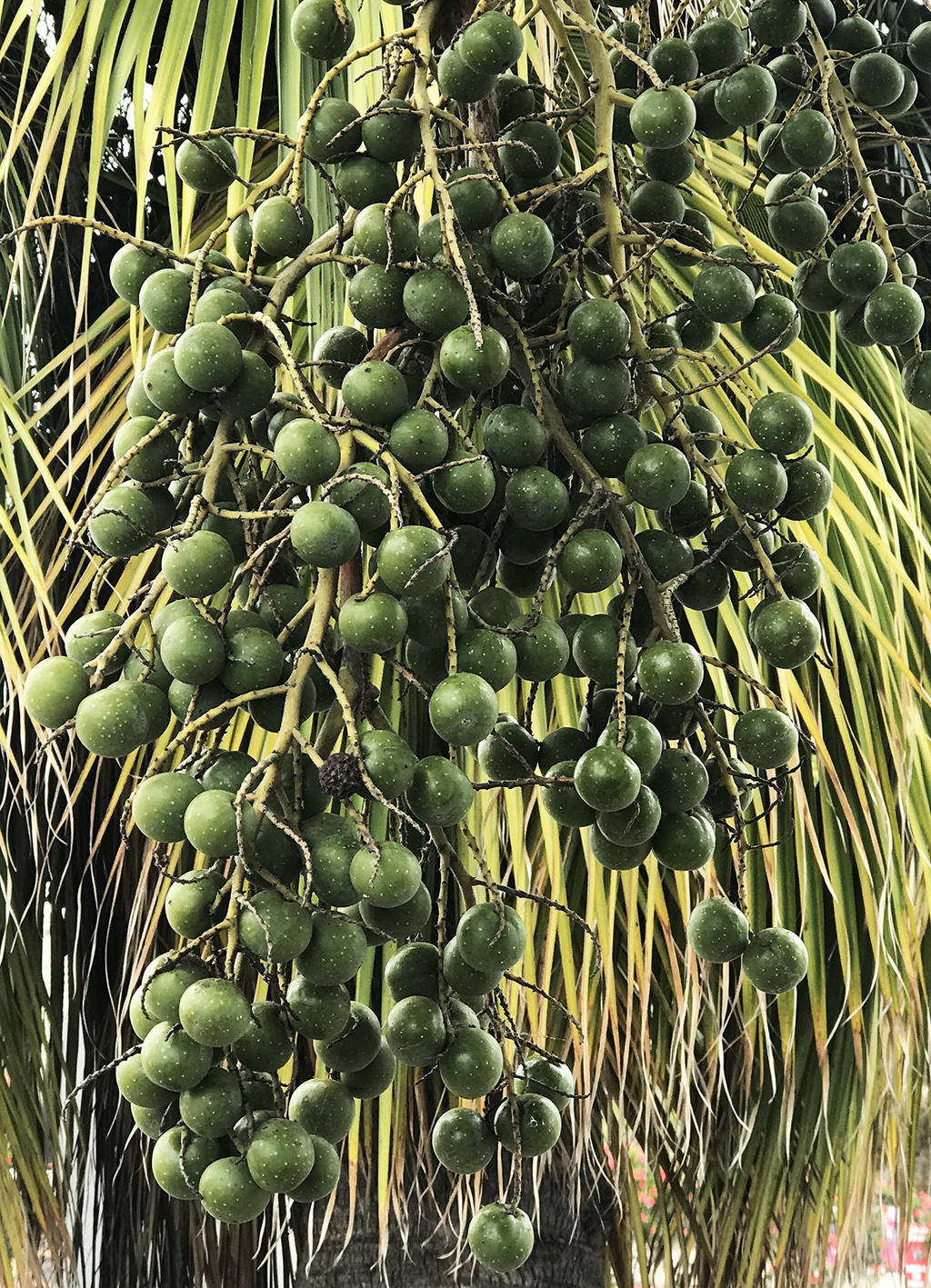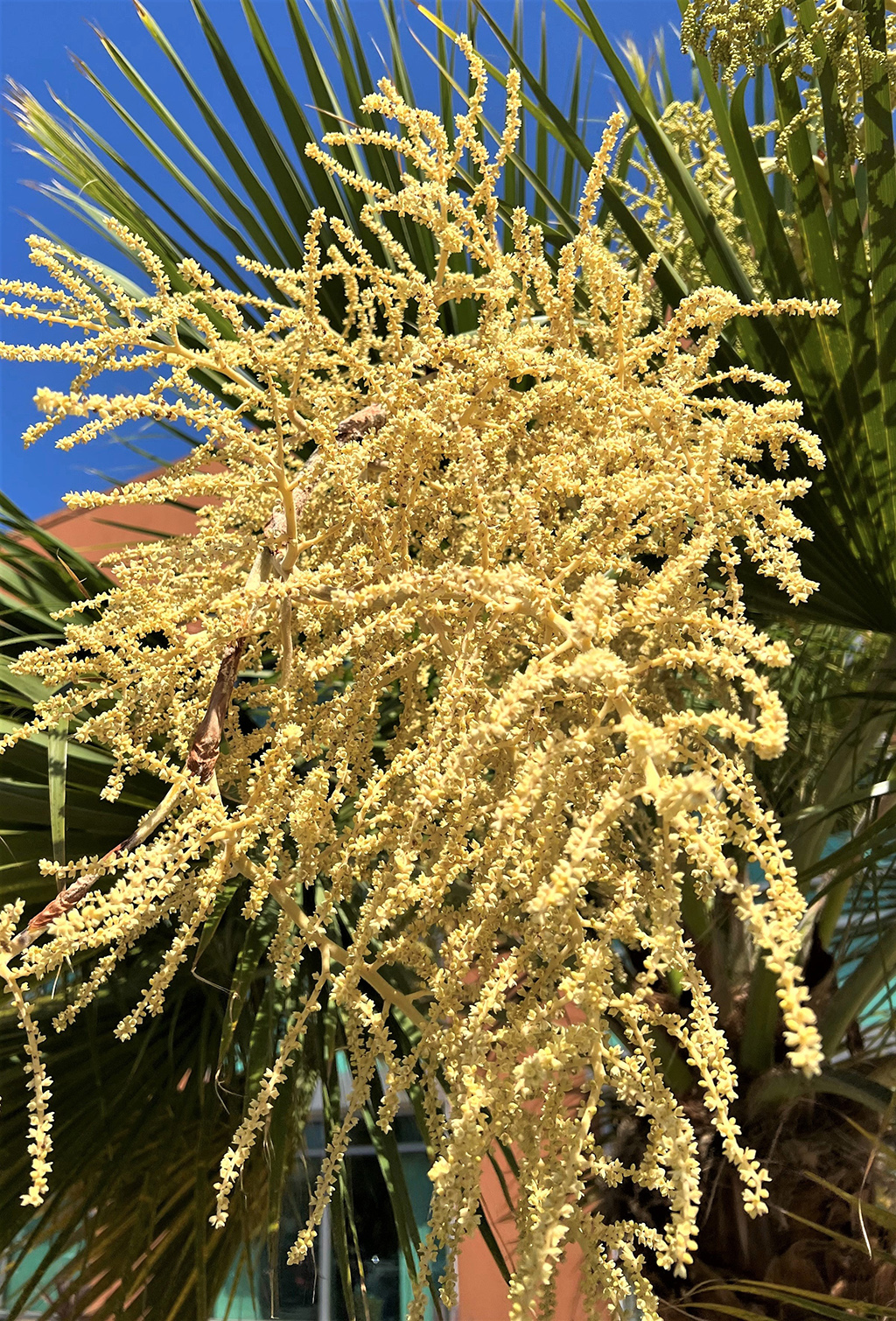Santa Barbara Beautiful Tree of the Month – June 2022

Brahea edulis
The Guadalupe Palm is an ideal palm for our area, for many reasons. Its luxurious, light green, foliage provides beauty all year long. It is perhaps the most sustainable palm – once established, it is drought-tolerant. Because of its slow growth and small stature at maturity, it has a good scale and shape for most gardens and landscapes. It is low maintenance, not requiring pruning. On top of that, the fruit is edible. What more could anyone ask of a palm?
Guadalupe Palm loves central California’s coastal climate, which is similar to that on Guadalupe Island – located 130 miles off the west coast of Baja California – where it is endemic. Amazingly, though coming from such a small island, this palm has been widely dispersed, becoming a valued landscape tree in almost all the palm-growing regions of the world.
Unfortunately, this lovely palm is highly endangered and almost extinct in the wild, the result of the near decimation of Guadalupe Island’s native palm population by herds of voracious non-native goats, which were introduced there by European settlers in the early 1800’s. Many of their domestic goats escaped, went feral, and multiplied prodigiously. They devoured any tasty palm fruits that fell to the ground; if fruit managed to sprout, that tasty greenery was eaten, too.
Fortunately, beginning in 2005, a program was instituted by the Mexican government to completely eradicate the feral goat population on Guadalupe Island. That program, combined with more recent conservation and restoration efforts, has resulted in steadily increasing numbers of these palms on the island – as well as increasing numbers of other, goat-reduced, native tree species, such as Island Oak (Quercus tomentella) and Monterey Pine (Pinus radiata).
Even though the Guadalupe Palm has been planted by horticulturists in Santa Barbara County for over 120 years, it remains relatively unknown, or at least generally unrecognized, by most locals. One of the reasons for this lack of awareness must be that it is often confused with the ubiquitous Mexican Fan Palm (Washingtonia robusta). This confusion can be problematic, because the Guadalupe Palm has several attributes that make it more desirable – and often the better design selection than its (much, much, taller) Mexican Fan Palm cousin – for many landscape applications.
Guadalupe Palm is a single-trunked palm that reaches a height of only 15- to 30-feet at maturity and that grows slowly – at the rate of only 6 inches or less per year when young, slowing as it ages. The stout trunk (12- to 14-inches in diameter) is topped with a large head (10- to 15-feet wide) that contains about 20, robust, light-green, fronds. Each fond has a palmate (hand-shaped) large blade (3- to 5-feet across), which is divided into as many as 70 to 80 segments and which is attached to the trunk by a sturdy petiole (a stem, 3- to 5- feet in length). The older petioles arch gracefully downwards, giving the frond head a well-rounded shape. One of the best features of this palm is that it is self-cleaning – its fronds naturally abscise (drop off) from the trunk – eliminating the need for human-pruning and leaving a surprisingly clean trunk. The trunk, light gray in color, bears distinctive horizontal ridges created by the rings/scars of the abscised fronds.
Creamy-yellow flowers, blooming from March to June, add a dazzling dimension of interest. The inflorescences (flower-bearing stalks, 3-to 6-feet long) emerge from between the fronds and then divide into multiple branchlets that are covered with tiny flowers in clusters of three. These flowers are “perfect”, meaning each have both male and female parts.
After the flowers are pollinated, the inflorescences become decorative dangling stalks that are covered with round fruits (1 inch in diameter). When new, the fruit is green – gradually turning yellow – and then, when ripe, turning black; the ripe fruit clusters often resemble bunches of grapes. Oddly enough, it can take two years for the fruit to ripen. The long wait will be rewarded with edible, semi-sweet, palm fruits that can be eaten directly or, more commonly, used to make preserves and jelly. The seeds can easily be used for propagation, taking up to six months to germinate.
The botanical name for Guadalupe Palm is Brahea edulis. The genus name, Brahea, honors the Danish astronomer, Tycho Brahe (1546-1601). The specific epithet name, edulis, is derived from the Late Latin word, “edibilis”, meaning “edible”, referring to the fruit.
The versatile Guadalupe Palm can grow anywhere in our community and in practically any soil type. However, it does not do well in wet conditions or with poor drainage. Once established, it is drought resistant. It can grow in full sun to partial shade. It will withstand both coastal salt-spray and high heat. It tolerates windy locations but does look lusher when given some wind protection. It is cold hardy to 18 degrees F. In addition, it is apparently not susceptible to any insect pests or diseases.
Guadalupe Palm can be planted as a fine individual specimen – or in groups of three or more for visual impact – or in formal rows along borders or driveways. It is such a good choice for so many of our varied landscapes that it really should be planted here more frequently.
Guadalupe Palm can be found all around town but most are seen in the green spaces along our waterfront and harbor, where it is mixed with other types of palms (primarily Mexican Fan Palms). Mature specimens stand at the County Court House (Figueroa Street side), in East Alameda Park, in Franceschi Park (east side), as a street tree in front of 436 Foxen Drive, as a row of street trees in the 500 block of Cota Street, Lotusland, and as a row of trees on the south side of the Goleta Valley Medical Building (5333 Hollister Avenue).
Tree-of-the-Month articles are sponsored by Santa Barbara Beautiful, whose many missions include the increase of public awareness and appreciation of Santa Barbara’s many outstanding trees and, in a long-time partnership with the City Parks & Recreation Department, the funding and planting of trees along the City’s streets.
Those who wish to honor a special someone can do so with an attractive commemorative marker that will be installed at the base of an existing street tree in the City of Santa Barbara. Because Santa Barbara Beautiful has participated in the planting to date of over 13,000 street trees, there are plenty of trees from which to choose! Application forms are available on the Santa Barbara Beautiful website, www.sbbeautiful.org.
Article and photos by David Gress


